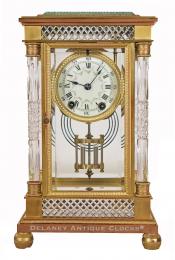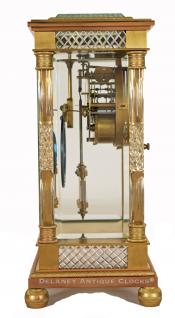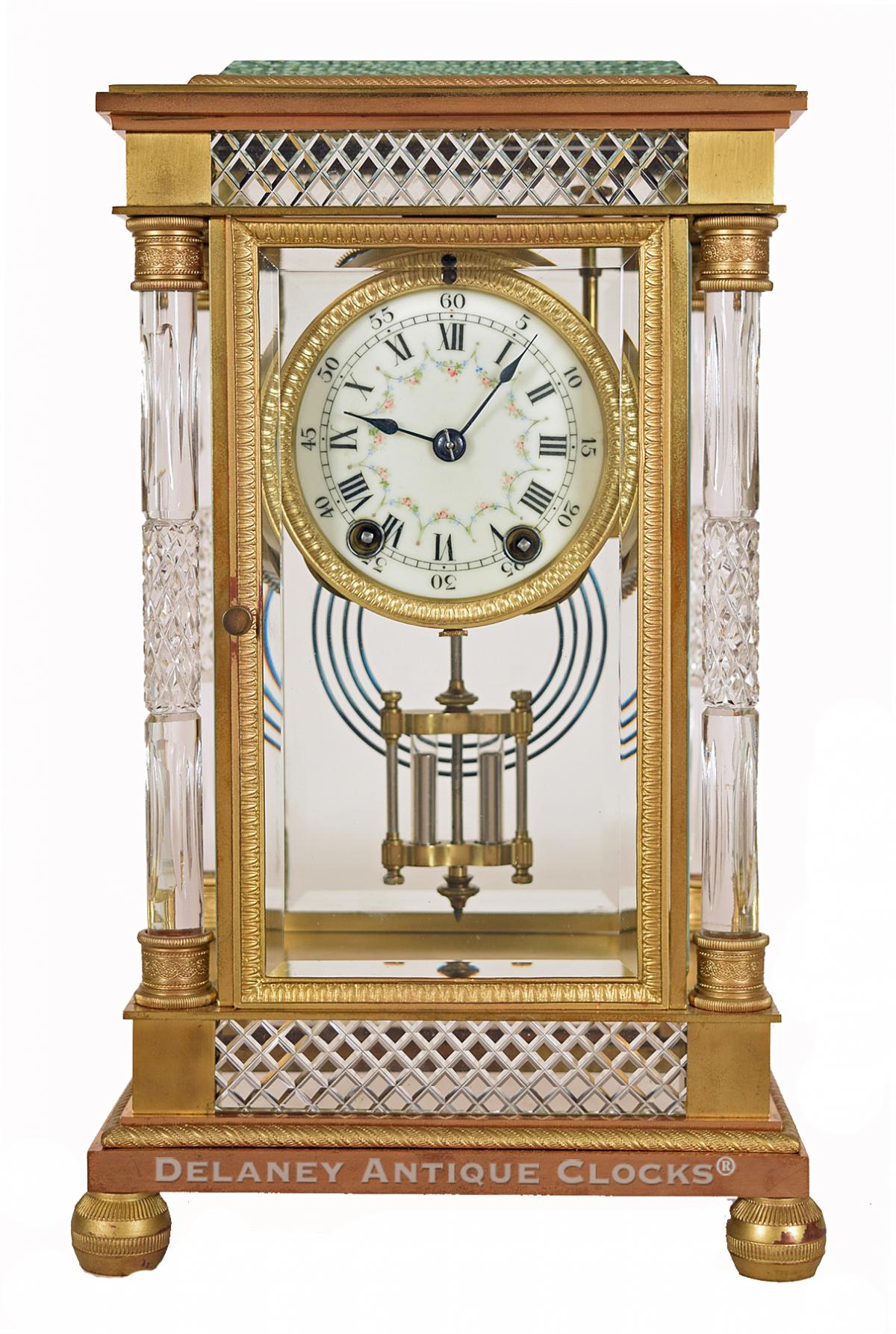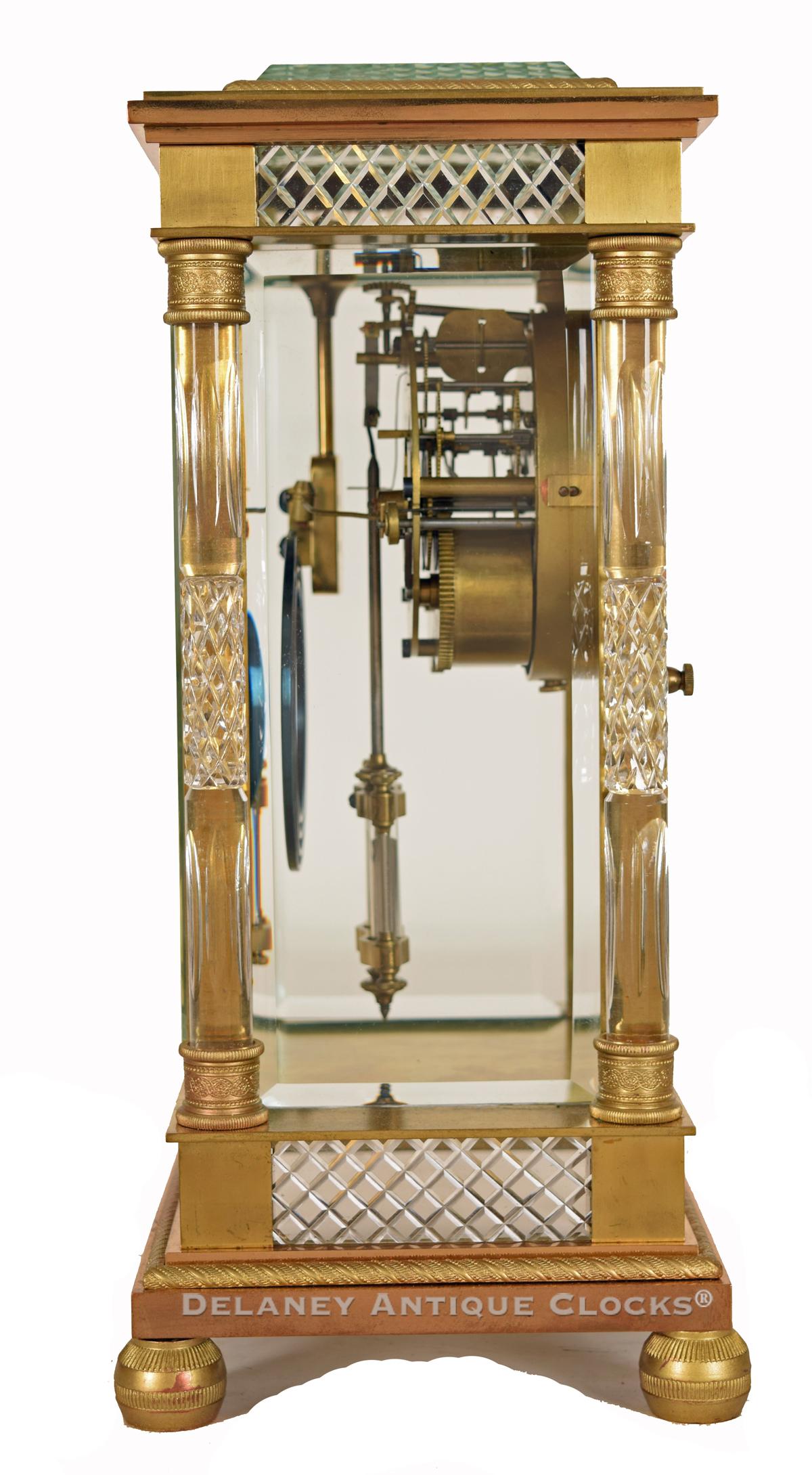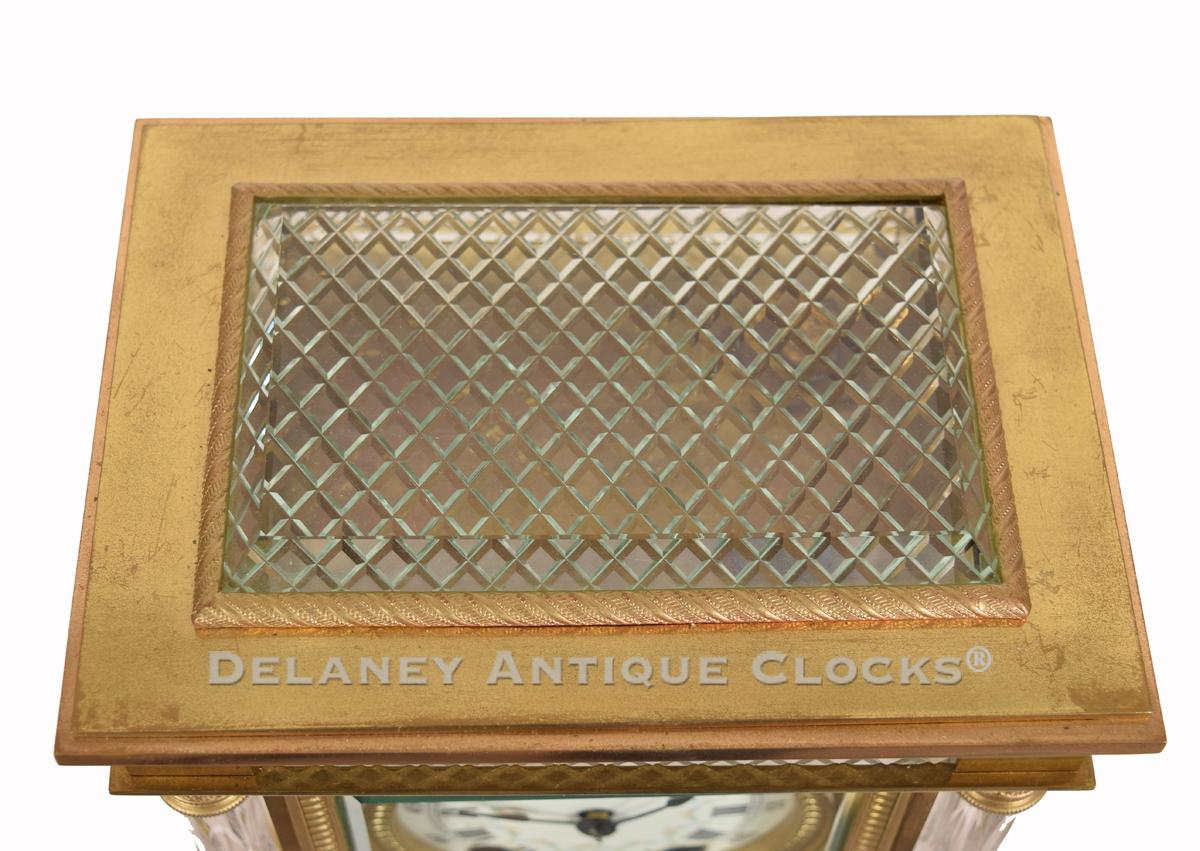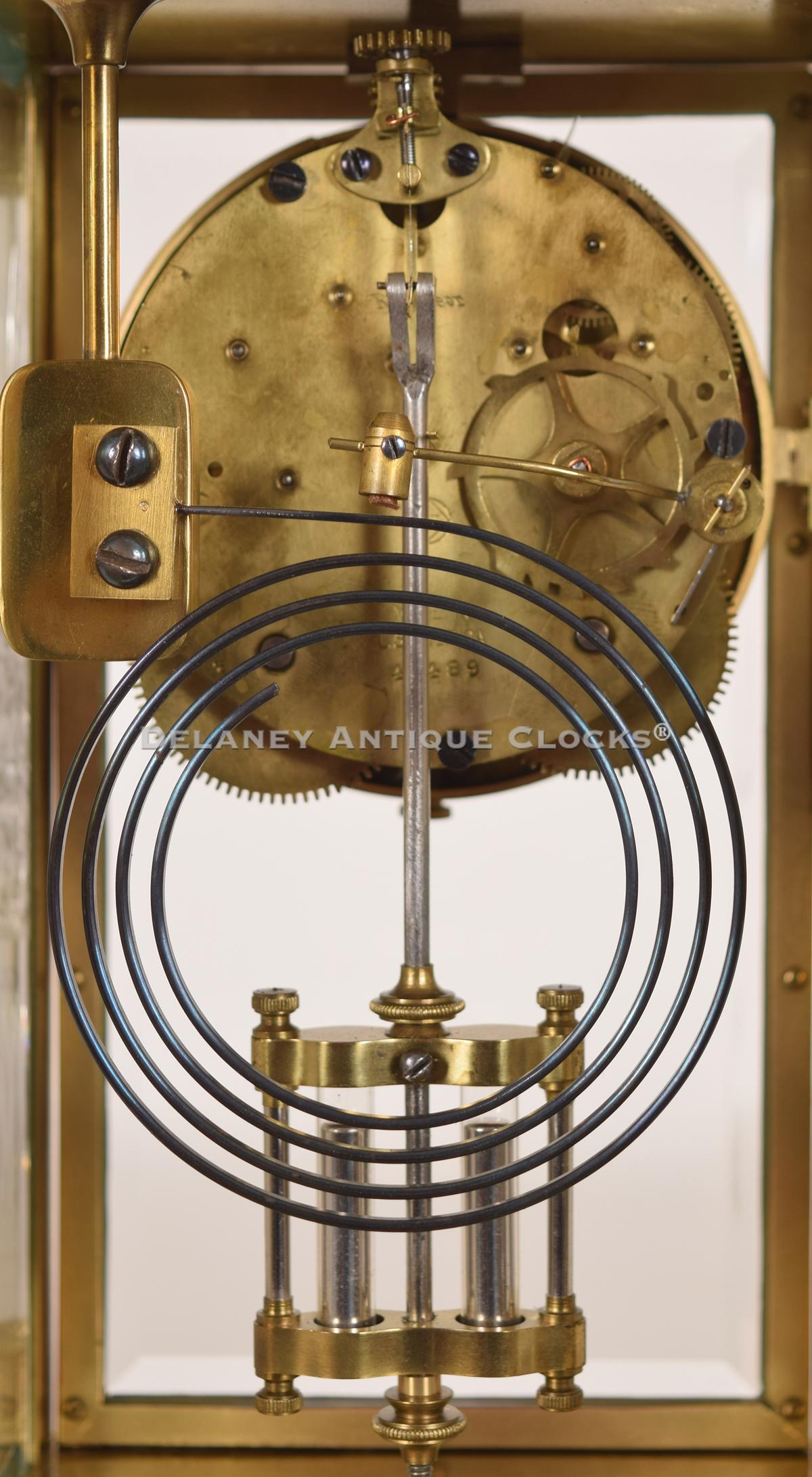Seth Thomas model Empire No. 30 Cut Glass Crystal Regulator. 222077.
The Seth Thomas Clock Company made a large number of Crystal Regulator forms after 1900. They came in a variety of shapes and sizes. Their line ran the spectrum from simple rectangular-shaped cases to complex designs that featured bowed panels and or applied castings.
This attractive example is cataloged as the Empire No. 30 Cut Glass. This is undoubtedly one of, if not their best model. The center of the case is standard for the form. The four rectangular-shaped glass panels feature beveled edges. The front and back panels serve double duty as access doors. Where this clock differs is the inclusion of the cut glass ornamentation. One should be quick to notice the four free-standing columns. These are cut glass and are secured in decorative brass capitals. This clock also features nine rectangular-shaped cut glass panels. Four of these are mounted in the clock's base, one on each of the four sides. Four additional panels are mounted similarly at the top of the case. The last panel is the largest and is mounted on the top surface of the case. This positioning is reminiscent of an atrium window in a building. All of this crystal decoration is designed to reflect light in the space off its many surfaces. This is also aided by the rhythmic motion of the two-jar faux mercurial pendulum. The case sits on four brass feet. The dial is porcelain and measures four inches in diameter. It is decorated with black Roman-style hour numerals, black 5-minute numbers, and a colorful floral garland. The dial is framed with a brass bezel. The 15-day spring-driven movement features round-shaped plates. The backplate is stamped with the Seth Thomas trademark. Seth Thomas categorized this movement as being "high-grade." It strikes the hours and half-hours on a coiled gong via a countwheel system.
This clock is in very good condition. The case is 12.5 inches tall, 8.5 inches wide, and 6 inches deep. This clock was made circa 1905.
Inventory number 222077.
Seth Thomas was born in Wolcott, Connecticut, in 1785. He was apprenticed as a carpenter and joiner and worked building houses and barns. He started in the clock business in 1807, working for clockmaker Eli Terry. Thomas formed a clock-making partnership in Plymouth, Connecticut, with Eli Terry and Silas Hoadley as Terry, Thomas & Hoadley. In 1810, he bought Terry’s clock business, making tall clocks with wooden movements. He chose to sell his partnership in 1812, moving in 1813 to Plymouth Hollow, Connecticut, where he set up a factory to make metal-movement clocks. In 1817, he added shelf and mantel clocks. By the mid-1840s, He successfully transitioned to brass movements and expanded his operations by building a brass rolling mill and a cotton factory. His clock business expanded until it became one of the “BIG Seven” in Connecticut and competed at every price point, from kitchen clocks to precision regulators. He made the clock that is used in Fireman’s Hall. He died in 1859, at which point the company was taken over by his son, Aaron, who added many styles and improvements after his father’s death. The company went out of business in the 1980s.

